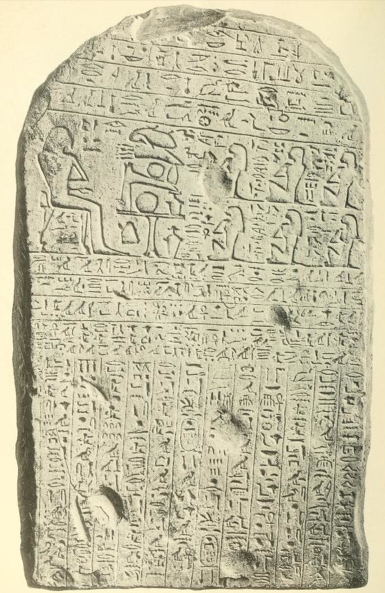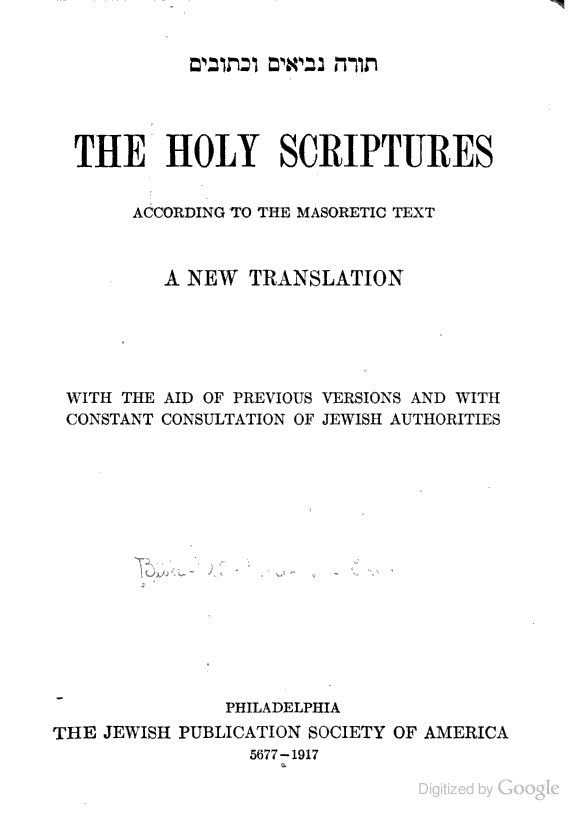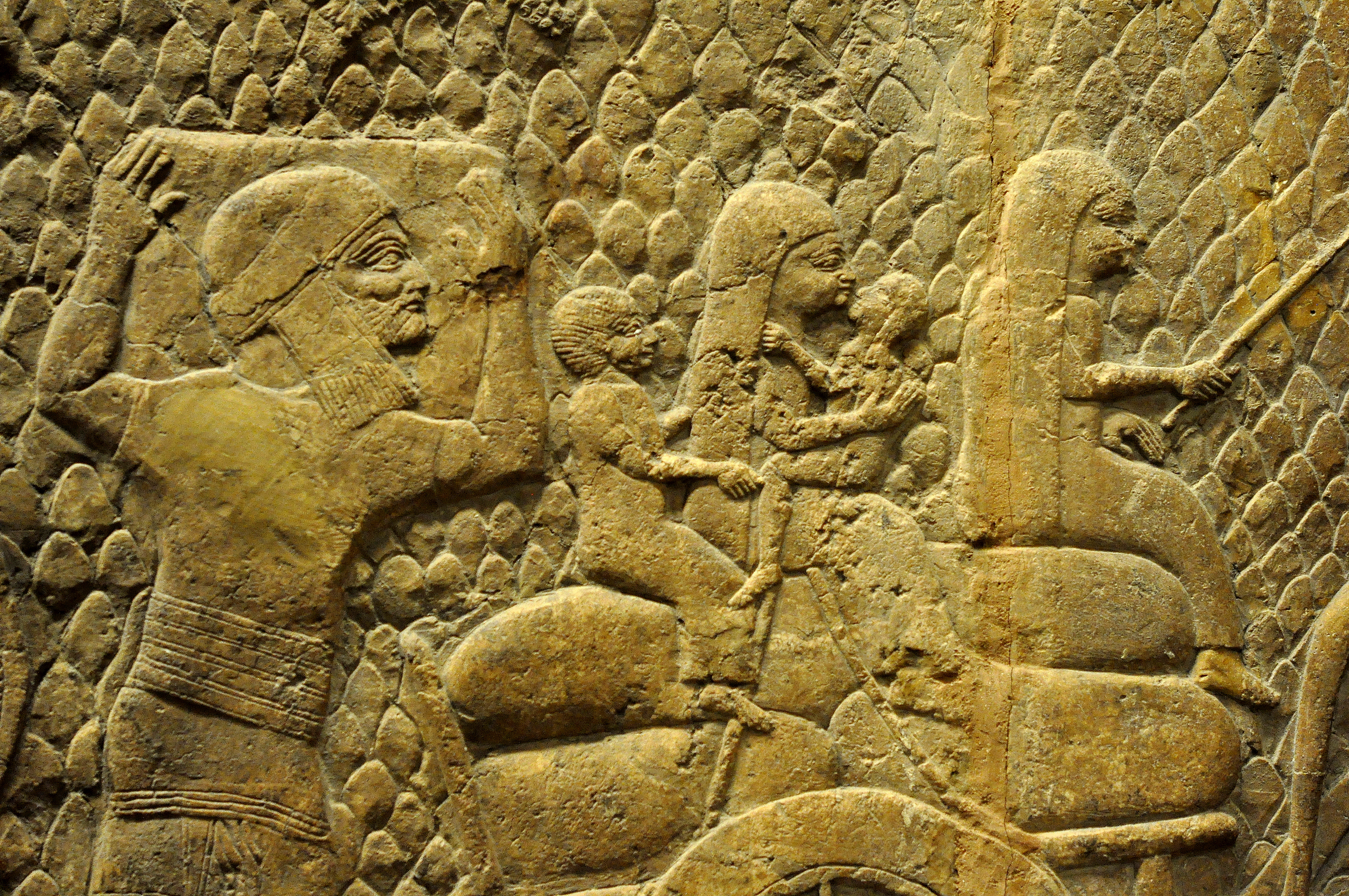|
Pim Weight
Pim weights were polished stones about 15 mm (5/8 inch) diameter, equal to about two-thirds of a Hebrew shekel. Many specimens have been found since their initial discovery early in the 20th century, and each one weighs about 7.6 grams, compared to 11.5 grams of a shekel. Its name comes from the inscription seen across the top of its dome shape: the Phoenician letters 𐤐𐤉𐤌 (Hebrew , transliterated pym). Impact Prior to the discovery of the weights by archaeologists, scholars did not know how to translate the word (''pîm'') in 1 Samuel 13:21. Robert Alexander Stewart Macalister's excavations at Gezer (1902-1905 and 1907-1909) were published in 1912 with an illustration showing one such weight, which Macalister compared to another published in 1907 by Charles Simon Clermont-Ganneau. Here is the 1611 translation of the King James Version of the Bible: :''Yet they had a file for the mattocks, and for the coulters, and for the forks, and for the axes, and to s ... [...More Info...] [...Related Items...] OR: [Wikipedia] [Google] [Baidu] |
Inch
Measuring tape with inches The inch (symbol: in or ″) is a unit of length in the British imperial and the United States customary systems of measurement. It is equal to yard or of a foot. Derived from the Roman uncia ("twelfth"), the word ''inch'' is also sometimes used to translate similar units in other measurement systems, usually understood as deriving from the width of the human thumb. Standards for the exact length of an inch have varied in the past, but since the adoption of the international yard during the 1950s and 1960s the inch has been based on the metric system and defined as exactly 25.4 mm. Name The English word "inch" ( ang, ynce) was an early borrowing from Latin ' ("one-twelfth; Roman inch; Roman ounce"). The vowel change from Latin to Old English (which became Modern English ) is known as umlaut. The consonant change from the Latin (spelled ''c'') to English is palatalisation. Both were features of Old English phonology; see and fo ... [...More Info...] [...Related Items...] OR: [Wikipedia] [Google] [Baidu] |
New King James Version
The New King James Version (NKJV) is an English translation of the Bible. The complete NKJV Bible was published in 1982 by Thomas Nelson, now HarperCollins. The NKJV is described by Thomas Nelson as being "scrupulously faithful to the original, yet truly updated to enhance its clarity and readability." History The NKJV translation project was conceived by Arthur Farstad. It was inaugurated in 1975 with two meetings (Nashville and Chicago) of 130 biblical scholars, pastors, and theologians. The men who were invited prepared the guidelines for the NKJV. The aim of its translators was to update the vocabulary and grammar of the King James Version, while preserving the classic style and literary beauty of the original 1769 edition of the King James Version. The 130 translators believed in faithfulness to the original Greek, Aramaic, and Hebrew texts including the Dead Sea Scrolls. Also agreed upon for most New King James Bibles were easier event descriptions, a history of each b ... [...More Info...] [...Related Items...] OR: [Wikipedia] [Google] [Baidu] |
List Of Artifacts Significant To The Bible
The following is a list of inscribed artifacts, items made or given shape by humans, that are significant to biblical archaeology. Selected artifacts significant to biblical chronology These table lists inscriptions which are of particular significance to the study of biblical chronology. The table lists the following information about each artifact: ;Name: In English ;Current location: Museum or site ;Discovered: Date and location of discovery ;Date: Proposed date of creation of artifact ;Writing: Script used in inscription (if any) ;Significance: Reason for significance to biblical archeology ;Refs: ANET and COS references, and link to editio princeps (EP), if known Egyptian Other significant Egyptian artifacts * Execration texts – earliest references to many Biblical locations * Papyrus Brooklyn 35.1446– A document that lists the names of 45 individuals, including a Canaanite woman named "Šp-ra." Scholars assume that this is a hieroglyphic transliteration of the Hebre ... [...More Info...] [...Related Items...] OR: [Wikipedia] [Google] [Baidu] |
Biblical Archaeology
Biblical archaeology is an academic school and a subset of Biblical studies and Levantine archaeology. Biblical archaeology studies archaeological sites from the Ancient Near East and especially the Holy Land (also known as Palestine, Land of Israel and Canaan), from biblical times. Biblical archaeology emerged in the late 19th century, by British and American archaeologists, with the aim of confirming the historicity of the Bible. Between the 1920s, right after World War I, when Palestine came under British rule and the 1960s, biblical archaeology became the dominant American school of Levantine archaeology, led by figures such as William F. Albright and G. Ernest Wright. The work was mostly funded by churches and headed by theologists. From the late 1960s, biblical archaeology was influenced by processual archaeology ("New Archaeology") and faced issues that made it push aside the religious aspects of the research. This has led the American schools to shift away from bibli ... [...More Info...] [...Related Items...] OR: [Wikipedia] [Google] [Baidu] |
Ancient Hebrew Units Of Measurement
Biblical and Talmudic units of measurement were used primarily by ancient Israelites and appear frequently within the Hebrew Bible as well as in later rabbinic writings, such as the Mishnah and Talmud. These units of measurement continue to be used in functions regulating Jewish contemporary life. The specificity of some of the units used and which are encompassed under these systems of measurement (whether in linear distance, weight or volume of capacity) have given rise, in some instances, to disputes, owing to the discontinuation of their Hebrew names and their replacement by other names in modern usage. Note: The listed measurements of this system range from the lowest to highest acceptable halakhic value, in terms of conversion to and from contemporary systems of measurement. Contemporary unit conversion While documentation on each unit's relation to another's is plentiful, there is much debate, both within Judaism and in academia, about the exact relationship between mea ... [...More Info...] [...Related Items...] OR: [Wikipedia] [Google] [Baidu] |
Jewish Publication Society Of America Version
The Jewish Publication Society of America Version (JPS) of the Tanakh (the Hebrew Bible) was the first Bible translation published by the Jewish Publication Society of America and the first translation of the Tanakh into English by a committee of Jews (though there had been earlier solo efforts, such as that of Isaac Leeser). The full publication title is ''The Holy Scriptures According to the Masoretic Text: A New Translation with the Aid of Previous Versions and with Constant Consultation of Jewish Authorities''. Earlier translations The translation, which appeared in 1917, is heavily indebted to the Revised Version and American Standard Version. It differs from them in many passages where Jewish and Christian interpretations differ, notably in Isaiah 7:14, where it has "young woman" as opposed to the word "virgin" which is used in most Christian Bibles. The translation was initiated in 1892 by the Central Conference of American Rabbis, the organization of Reform rabbis, and ... [...More Info...] [...Related Items...] OR: [Wikipedia] [Google] [Baidu] |
Jewish Publication Society
The Jewish Publication Society (JPS), originally known as the Jewish Publication Society of America, is the oldest nonprofit, nondenominational publisher of Jewish works in English. Founded in Philadelphia in 1888, by reform Rabbi Joseph Krauskopf among others, JPS is especially well known for its English translation of the Hebrew Bible, the JPS Tanakh. The JPS Bible translation is used in Jewish and Christian seminaries, on hundreds of college campuses, in informal adult study settings, in synagogues, and in Jewish day schools and supplementary programs. It has been licensed in a wide variety of books as well as in electronic media. As a nonprofit publisher, JPS develops projects that for-profit publishers will not invest in, significant projects that may take years to complete. Other core JPS projects include the ongoing JPS Bible commentary series; books on Jewish tradition, holidays and customs, history, theology, ethics and philosophy; midrash and Rabbinics; and its many B ... [...More Info...] [...Related Items...] OR: [Wikipedia] [Google] [Baidu] |
King James Version Of The Bible
The King James Version (KJV), also the King James Bible (KJB) and the Authorized Version, is an English translation of the Christian Bible for the Church of England, which was commissioned in 1604 and published in 1611, by sponsorship of King James VI and I. The 80 books of the King James Version include 39 books of the Old Testament, an intertestamental section containing 14 books of what Protestants consider the Apocrypha, and the 27 books of the New Testament. Noted for its "majesty of style", the King James Version has been described as one of the most important books in English culture and a driving force in the shaping of the English-speaking world. The KJV was first printed by John Norton and Robert Barker, who both held the post of the King's Printer, and was the third translation into English language approved by the English Church authorities: The first had been the Great Bible, commissioned in the reign of King Henry VIII (1535), and the second had been the ... [...More Info...] [...Related Items...] OR: [Wikipedia] [Google] [Baidu] |
Hebrew People
The terms ''Hebrews'' (Hebrew: / , Modern: ' / ', Tiberian: ' / '; ISO 259-3: ' / ') and ''Hebrew people'' are mostly considered synonymous with the Semitic-speaking Israelites, especially in the pre-monarchic period when they were still nomadic. However, in some instances it may also be used in a wider sense, referring to the Phoenicians, or to other ancient groups, such as the group known as Shasu of ''Yhw'' on the eve of the Bronze Age collapse, which appears 34 times within 32 verses of the Hebrew Bible. It is sometimes regarded as an ethnonym and sometimes not. By the time of the Roman Empire, Greek ''Hebraios'' could refer to the Jews in general, as ''Strong's Hebrew Dictionary'' puts it, "any of the Jewish Nation", and at other times more specifically to the Jews living in Judea. In early Christianity, the Greek term refers to Jewish Christians as opposed to the gentile Christians and Judaizers (Acts 6:1 among others). is the province where the Temple was located. ... [...More Info...] [...Related Items...] OR: [Wikipedia] [Google] [Baidu] |
Charles Simon Clermont-Ganneau
Charles Simon Clermont-Ganneau (19 February 1846 – 15 February 1923) was a noted French Orientalist and archaeologist. Biography Clermont-Ganneau was born in Paris, the son of Simon Ganneau, a sculptor and mystic who died in 1851 when Clermont-Ganneau was five, after which Théophile Gautier took him under his wing. After an education at the Institut national des langues et civilisations orientales, he entered the diplomatic service as ''dragoman'' to the consulate at Jerusalem, and afterwards at Constantinople. He laid the foundation of his reputation by his involvement with the Mesha Stele (Moabite Stone), which bears the oldest Semitic inscription known. In 1871, Clermont-Ganneau identified the biblical city of Gezer (Joshua 16:11) with that of Abu Shusha, formerly known as ''Tell el Jezer''. In the same year he discovered the Temple Warning inscription in Jerusalem. In 1874 he was employed by the British government to take charge of an archaeological expedition to Pale ... [...More Info...] [...Related Items...] OR: [Wikipedia] [Google] [Baidu] |






